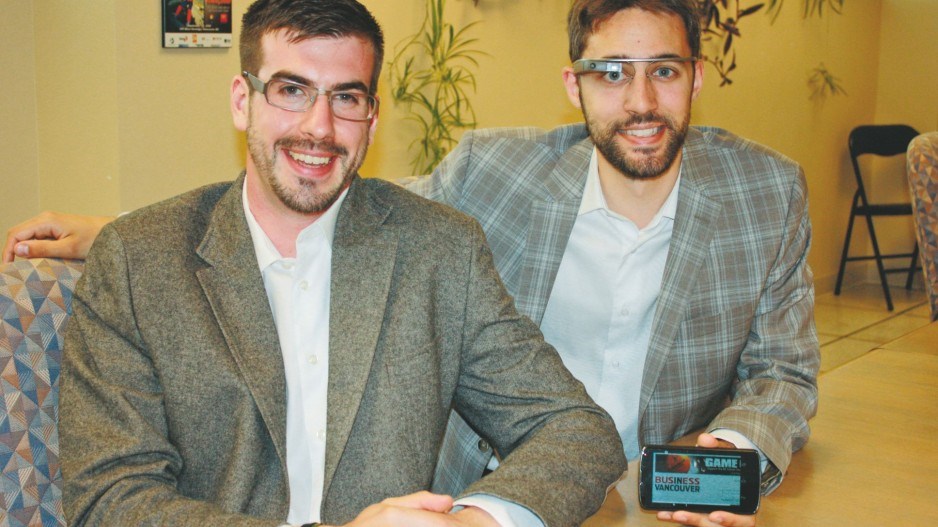Techies who wear them in public have been dubbed Glassholes, and a skit featuring a twitching, unfocused Fred Armisen evangelizing for Google Glass is one of the funnier bits from Saturday Night Live recently.
Oddly, one of the coolest new gadgets in computing has an image problem, possibly the result of the fact Google (Nasdaq:GOOG) released a prototype to the development community before all the bugs were worked out.
"This is a prototype," said Kenny MacKenzie, co-founder of Vandrico, a North Vancouver software developer making workplace apps for Google Glass.
"There's still lots of improvements to come. This is uncharted territory. No one knows what's going to happen with wearable technology."
The beta version of Google Glass has a short battery life (about four hours), sometimes misunderstands voice commands and makes the wearer look odd because activating the device requires tilting one's head and talking out loud – something that is sure to draw stares on transit.
As a consumer product, Google Glass appears thus far to be a novelty. It's the device's industrial applications that Vandrico thinks hold the most promise.
"For us, it's wearable technology in the workplace," Vandrico co-founder Gonzalo Tudela told Business in Vancouver during a recent demonstration.
Tudela believes there's a big market for smart-glass technology in the mining, oil and gas and manufacturing sectors.
Surgeons in Spain have already used Google Glass to record video of an operation, and Tudela said there are numerous applications for the device in any industry – or emergency services – where workers need both hands free.
Because it combines hands-free communication (calling, emailing and video conferencing) with GPS functions and video, it could be used by miners, pipeline crews, loggers, forest fire crews, manufacturers and factory workers.
"You can have GPS, and you can turn on video and have conversations without using a radio, for example," Tudela said. "Because it's a prototype phase, we don't exactly know the full extent of the full power of the full product."
Vandrico is talking with industry leaders to find out just what their needs are.
"The biggest problem with IT technologies is they always come and create the product and then try to sell it to the consumer," Tudela said. "This is a whole new market. Let's see what the market wants and what we can do first before we create the products."
Shane Luke, vice-president of product management for Recon Instruments – a Vancouver tech company that has developed smart glasses for cyclists, runners and triathletes – agrees that niche markets may be the best entry point for the burgeoning wearable device market.
"If you immediately go into the sphere of the all-day, everyday wearer, you're asking for a lot of acceptance and behaviour change from people very quickly," he said.
"But if you go into something specific, you're talking about people whose behaviour is already specialized at the time that they're going to use this. If you look at cycling, as an example, people wear funny-looking helmets and Spandex already.
"Regardless of how big the wearable computing ends up being, it's going to be quite large. Not only is it going to be big, it's going to be very fast."
Vandrico is not focused solely on apps for Google Glass – it is looking at workplace apps for a variety of smart devices.
Already, there are several competitors in the smart-glass space (see sidebar), including Recon, which plans to start shipping its new Jet glasses sometime around Christmas.
Recon is focused specifically on the sports market, but has been approached by companies that think there may be applications for the glasses in areas like search and rescue, warehouse operations and resource industries.
The company plans to continue to focus on the sports market, although it has released an open software development kit that will allow companies like Vandrico to develop their own apps to run on the Recon Jet smart device.




